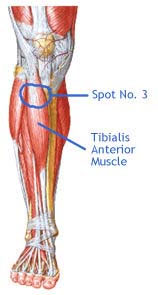When it comes to weight loss, not all bodies are created equal. From low-carb diets to low-fat plans, the options seem endless, but not every approach works universally. Recent research has revealed that your body shape—whether apple or pear—plays a critical role in how your body responds to different diets. It’s not just about calorie consumption but also how your body processes food through insulin secretion. Understanding these factors can help you make smarter, more effective choices to shed pounds in the right places and achieve lasting results.
Calories, Insulin, and Weight Gain
At its core, weight loss boils down to burning more calories than you consume. However, the process is influenced by complex biological factors, including insulin, a hormone that regulates blood sugar levels and fat storage. When you eat, your body breaks food into sugars that provide energy. Insulin signals your body to store excess sugar as fat, which can lead to weight gain if levels remain elevated. Dr. Gary D. Foster, director of "The Center for Obesity Research and Education at Temple University", describes insulin as "the hormone of feast," underscoring its critical role in fat storage and appetite regulation. For some individuals, insulin levels fluctuate so significantly that they feel hungry even after a large meal, making overeating more likely.
Body Shape and Insulin Secretion
Research conducted at Boston’s Children’s Hospital of Obesity has uncovered a fascinating link between body shape and insulin secretion. The study, led by Dr. David Ludwig, examined 73 obese adults and categorized them as either high or low insulin secretors. High insulin secretors tend to carry excess weight around their waists, creating an apple-shaped body. Low insulin secretors, on the other hand, store fat around their hips, resulting in a pear shape. These distinctions are not just cosmetic; they significantly influence how effectively individuals lose weight on different diets. High insulin secretors benefit most from low-glycemic diets, which limit simple carbohydrates, while low insulin secretors respond equally well to both low-fat and low-glycemic approaches.
Evidence from the Study
The six-month study monitored the weight loss progress of participants based on their body shape and insulin secretion levels. Apple-shaped individuals with high insulin secretion lost an average of 6 kilograms on a low-glycemic diet, compared to just 2.3 kilograms on a low-fat diet. In contrast, pear-shaped individuals with low insulin secretion achieved similar results on both diet types, losing approximately 4.5 kilograms. While the exact mechanisms linking body shape and insulin response remain unclear, the findings highlight the importance of personalized dietary strategies tailored to biological factors.
Practical Implications for Dieting
The study does not suggest that apple-shaped individuals should immediately adopt extreme low-carb regimens like the Atkins diet or that pear-shaped individuals can follow any plan without effort. Instead, it emphasizes the value of understanding your body’s insulin response to select a diet that minimizes the risk of regaining lost weight. For apple-shaped individuals with high insulin secretion, low-glycemic diets focusing on complex carbohydrates and fiber-rich foods are more effective for long-term success. Pear-shaped individuals, who are less sensitive to insulin fluctuations, have greater flexibility in their dietary choices but still benefit from balanced, portion-controlled eating.
Testing Insulin Levels for Better Results
While body shape offers a visual cue, the most reliable way to determine your insulin secretion level is through a blood test. By understanding your insulin profile, you can make informed decisions about which dietary approach is best suited to your physiology. This personalized strategy not only enhances weight loss outcomes but also reduces the likelihood of falling into the yo-yo dieting cycle that often accompanies poorly chosen plans. Investing in this knowledge is a proactive step toward sustainable overall health and fitness.













